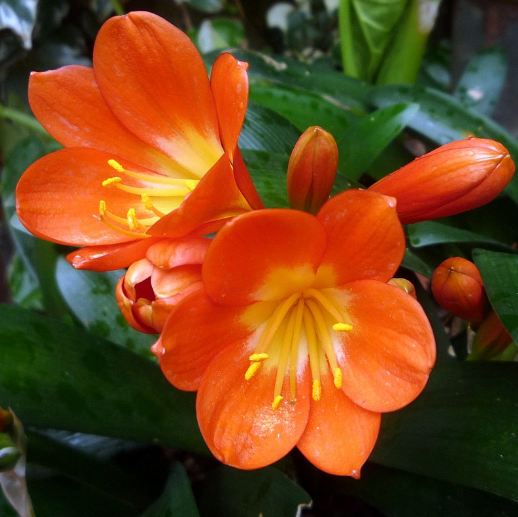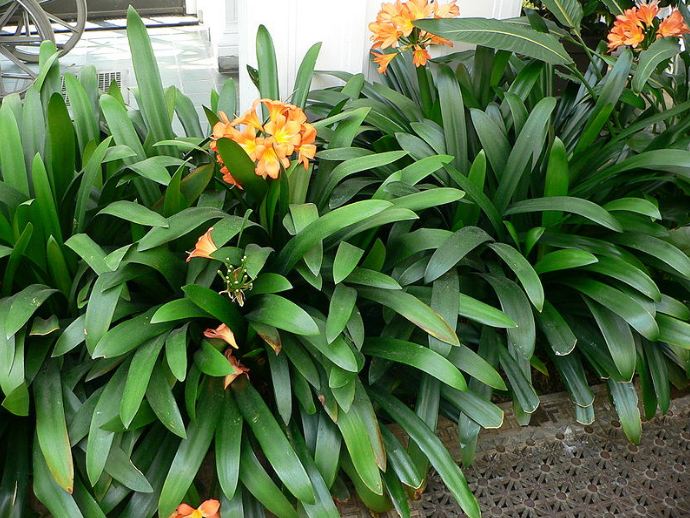Kaffir lily belongs to the family of Amaryllidaceae. With the scientific name of CliviaMiniata, kaffir lily originated in South Africa (Eastern Cape, Mpumalanga, and KwaZulu-Natal provinces) and Swaziland. A few varieties of kaffir lily are also present in Japan, China, and California.
As a beautiful flowering plant, kaffir lily is a great option to plant at home. It is famous for indoor nurseries in particular. It is because these plants bloom well in the shade and indoor temperatures. With orange, red, yellow, peach, or white sprouts, Kaffir lilies reach up to 18 inches tall. It grows in bunches of 10-15 trumpet-formed-blossoms over a thick, upstanding stem. The most recognized species of these are orange flowers with yellow centers.
As kaffir lilies as beautiful embellishments, below is a guide on how to plant them!
How to Plant Kaffir Lily
Although it does not belong to the lily family, it also goes by the names of fire lily, bush lily, and natal lily.
Kaffir lily is also a slow-growing plant with often no flowers during the first year. Although it takes years for the flowers to blossom and the flower lasts only for a few days, its beauty is worth the efforts.
Generally, we recommend planting Clivia in a small pot as a houseplant. It is because the plant grows better at room temperatures. You should keep it away from direct sunlight to prevent it from dying. Do not report the plant during its grooming season as well. The following are further tips on planting and maintaining it.
Prepare a Suitable Soil
You require good quality organic soil for its best blooming. The soil should be moist during summer and spring. Use the right fertilizers and minerals for healthy plant growth.
Sowing Your Seeds
Fill a tub with soil. Spot the seeds on top of it and cautiously press them in and water according to season requirements.
Water it Well
You should water it well per the weather changes and conditions around you. The plant grows best in 40% humidity: you may invest in a pebble tray or room humidifier for maintaining kaffir lilies as indoor plants. Prevent over-watering as it may cause the plant to die.
Optimize Temperatures
During spring, the average temperature of around 16 degrees Celsius to 24 degrees Celsius is perfect for clivia. As winter approaches, a rest of 4C to 10C is required to allow the plant to rebloom. These plants are frost-sensitive.
Fertilize on Time
We recommend high phosphorus fertilizers for kaffir lilies. Use it every two weeks.
Seeds or Root Splittings: What to Use?
The kaffir lily reproduces using two methods: either by root splitting or by using its seed.
Root splitting
Repotting is the ideal time for root splitting. Before setting the plant into its new pot, you can cut off side shoots from the thick fleshy root with a blade. The cutting must be a minimum of length 20 cm and should have three sets of leaves.
Spot the shoot into a combination of peat-based soil and water reasonably. Towards the start, place the pot under direct sunlight. When roots rise out of the substrate, you may pot the CliviaMiniata in another container with similar soil. Make sure to do this at the end of the blooming season.
Using seeds
The multiplication by seeds takes longer than by root parting. The plant sprouts over a time of two years after the planting. The blossoms of the plant form round or oval fruits that hold the seeds. These berries of the CliviaMiniata require as long as one year to be ready. During this time, they progressively turn red while the seeds in the berry begin to grow.
At the point when the seed case tears open and the tip of the base of the seedling gets through, you can cautiously hold onto the berry from the mother plant and sow the seeds in another pot.
Common Problems and Solutions for Kaffir Lilies
- Slugs and snails destroy kaffir lilies.
Solution. One can either handpick them by keeping a check at regular intervals or use pest controls in the pellet form. You may also plant them indoors.
- Black-yellow striped caterpillars, also called lily borers, can cause swear damage to the plant.
Solution. Use a pesticide and follow the instructions given on the packaging.
- Mealybugs may infest the plants leaving behind white waxy wool in the leaves.
Solution.One easy home remedy is washing the plant with soap and water. You may try wiping it off with an alcohol damp cotton swap as well. On a more professional scale, we recommend insecticide use.
- Nonflowering: main reasons for this can be overwatering, leading to waterlogging, or inadequate feeding.
Solution. Take the plant out of the container and remove any dead or rotten roots.
- Earthy colored patches on leaves might be because of searing. It can happen when light refracts through windows or water beads gather on the leaf surface.
Solution. Place it well and dab off the water from leaves after watering.
Precautions to Take
Kaffir lilies contain the poison lycorine. In little doses, it might irritate the stomach and the digestive tract. Large amounts of this plant can be hazardous for both humans and animals alike. Hence, it is vital to keep the plant away from kids and pets.
If you have pets like cats or dogs, or babies at home, place these on high shelves.
The Takeaway
CliviaMiniata is well known as an indoor plant where the atmosphere conditions permit. These plants are useful for making borderlines or mass plantings. Both their rough, dark green leaves and their conspicuous blossoms give a tasteful effect to the scene. Additionally, they are beautiful subjects for indoor décor. The bright popping colors of kaffir lily combined with the colors of other flowering plants of the season, for instance, Camellia, look lovely. Planting clivia with white shaded Cryptanthus (earth star), leafy green dumb canes, or Peperomia for shades of green look heavenly together. All these plants need similar growing atmospheres.
So what are you waiting for? Adorn your house with beautiful indoor plants like Kaffir Lily!




